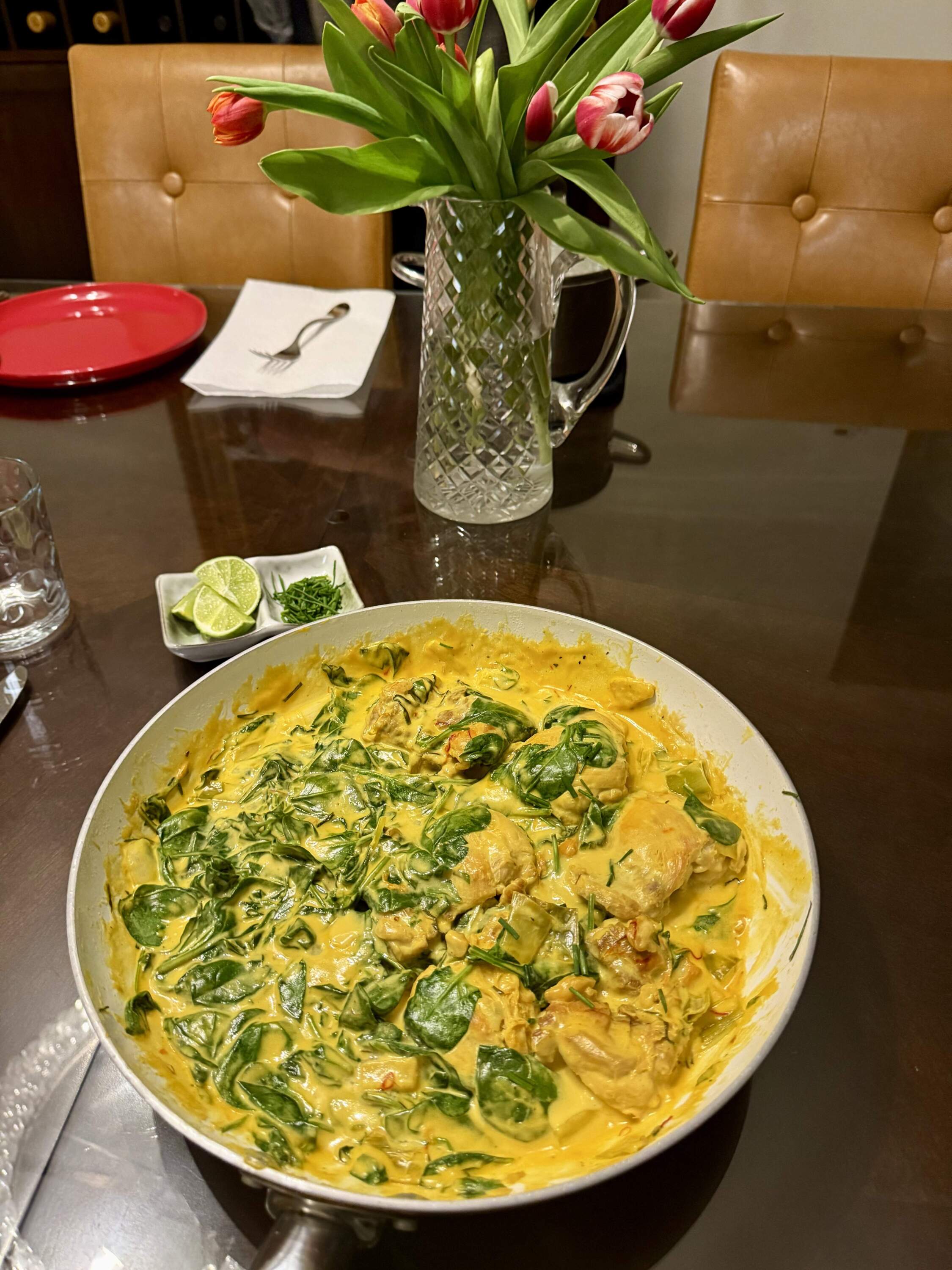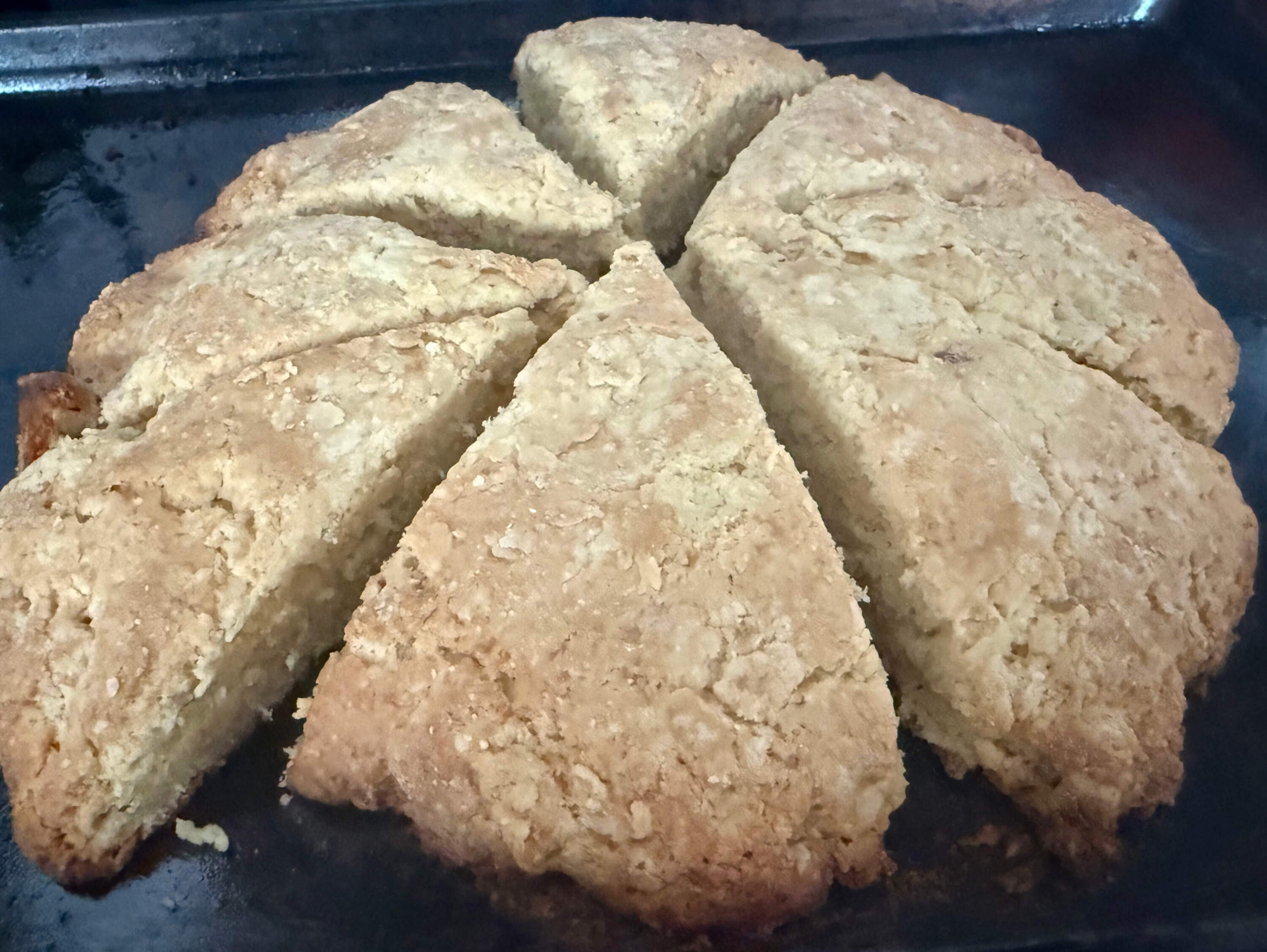Advertisement
Eat well soon: Recipes helping chef Kathy Gunst heal from an injury

I grew up in a tennis family. My dad played five times a week and was one of the best players at his club. My mother also enjoyed tennis with her friends. Our home was littered with tennis whites, sneakers and rackets. Of all the things I rebelled against as a teenager (the suburbs, scotch, cigarettes) giving up tennis is my one regret. It represented so much of what I didn’t want to be.
Fast forward 45 years. Both my parents are gone. When my father died, I started to watch tennis like a die-hard fan. I watched the U.S. Open and the French Open. I got up early to watch Wimbledon and the Australian Open. And one day a few months ago, sitting on my couch watching yet another tennis match, I had a revelation. It was time to start playing again. I signed up for classes. Within 30 minutes into my first class, I could already feel my groove coming back. By the third lesson, I was hooked. I couldn't wait to play. I made a few friends, and we booked the public courts (no tennis club for me!) to practice before our next class. I felt high from playing, a heart-thumping happiness.
And then came the accident. I was towards the back of the court and my opponent hit the ball very close to the net. I remember thinking: “I can get that.” I ran. I tripped. I fell. I don’t remember a whole lot more, but I rolled over and felt lightning bolts of pain coming from my right hand. When I looked at my fingers, they were pointed in all the wrong directions. Ambulance. ER. Two broken fingers, one cracked rib. Surgery a week later. A cast and at least three months of occupational therapy.
My new tennis life came to a screeching halt. But that's not all. Even though I’m a leftie and my dominant hand wasn’t injured, I found I couldn’t cook. Turns out you need two hands to chop, stir, measure, lift pots and pans, open packages of flour and sugar, and much more.
My husband has been doing most of the cooking while I recover. (Once I let him take over the kitchen, I was reminded that he’s a very good cook!) But truth be told, we’ve been eating a lot of takeout. Rather than being excited to have a break from the kitchen, I have been feeling bereft. Cooking and writing make up a big part of my professional identity and I found myself having an identity crisis.
Before my accident, I planned this segment to focus on a statistic I read just before the start of the new year. According to recent U.S. Department of Agriculture data, American consumers, “spend the majority of their food budgets on food away from home, and that number has been climbing significantly in recent years … In 2023 Americans spent just 44.3% of their food budget on food at home — an all-time low — while their spending on food away from home reached an all-time high of 55.7%.”
I wanted to address the question of why Americans aren’t cooking. Then I found myself not being able to cook. It changed my perspective. Takeout was easy: Push a button on your phone and food arrives within an hour. Sometimes it’s hot. Sometimes it’s not. Sometimes it’s delicious. Sometimes it's not. Cleaning up is easier, but what to do with all those plastic containers?
For me, cooking is comfort. I miss it a lot. And thinking about hard-working Americans spending 55.7% of their food budget on food that someone else cooked for them makes me feel bad. It’s always been my intention as a food journalist to help motivate people to realize that cooking isn’t nearly as time-consuming or complex as they might fear.
Advertisement
As my hand is healing, I am slowly returning to the kitchen. When I decided it was time to try cooking again, I felt aware that my first time in the kitchen in more than 6 weeks had to focus on simplicity with a minimum of chopping. My husband was at my side when I needed him. I had chicken thighs, some sweet winter spinach, a knob of fresh ginger and a can of coconut milk. I discovered some leftover spices and a tiny tin of saffron a friend gave me over the holidays. I set about putting together a chicken, spinach and coconut curry with a dash of saffron (you could also use turmeric) for color and flavor. It was so comforting on a cold rainy night served with a simple pot of white rice.
The next day I wanted to keep going, despite a very sore right hand. I decided to make scones to see if I could knead the dough with one hand. It took a while but the scones — with maple syrup, toasted walnuts, golden raisins — were spectacular. They won’t take you nearly as much time as they took me — assuming you’re working with two hands — and they are an ideal breakfast or mid-winter snack.
These segments normally offer three recipes, but under these circumstances, I could only manage two. I’ll be cooking up a storm within a month or so (it turns out that bones take a long time to heal). In the meantime, I urge you to find comfort in your own kitchen. Try a new recipe. And find your own healing.
Chicken and spinach coconut curry
I knew this dish needed a minimum of chopping and had to come together quickly. I wanted something bright and fresh tasting, but also satisfying for these grey, still-cold days of February. This simple curry combines sauteed chicken thighs with leeks, chives, spices and coconut milk. A friend gave me a container of saffron over the holidays, and I used a generous pinch here. But saffron is expensive, so you can also use turmeric for color and flavor. A dash of vinegar and fresh lime juice gives this winter dish a bracing, fresh wake-up flavor. Serve with white or brown rice.
Serves 2 to 3.

Ingredients
- ⅓ cup flour
- Salt and pepper
- 1-pound boneless chicken thighs, with or without skin
- 1 tablespoon olive or vegetable oil
- 2 cloves chopped or sliced garlic
- 2 tablespoons fresh chopped ginger, or 2 teaspoons dried
- Pinch saffron or turmeric
- 1 leek, white and pale green sections sliced lengthwise and then into 1-inch pieces, or 1 medium onion, thinly sliced
- ¼ cup minced chives or 2 scallions, finely chopped
- 1 to 2 tablespoons rice wine or white wine vinegar
- One 13.5 ounce can coconut milk
- 5 ounces baby spinach
- 1 to 2 tablespoons lime juice, plus lime wedges for serving
Instructions
- Place the flour seasoned with salt and pepper on a plate. Dredge the chicken in the flour and set aside.
- Heat a large skillet over medium heat. Add the oil and half the garlic and ginger and cook for 1 minute.
- Increase the heat to medium-high and add the chicken, season with more salt and pepper and let the chicken brown for about 3 minutes. Sprinkle on the saffron or turmeric and add the remaining garlic and ginger. Flip the chicken over and brown on the other side for 3 minutes. Add the leeks or onions and half the chives (or scallions) and cook for 2 minutes. Add the vinegar to the skillet and let simmer. Add the coconut milk and 2 tablespoons of water and simmer, covered, for about 6 minutes. Remove the cover and stir in the spinach; cook until wilted and chicken is cooked through, about 4 to 5 minutes. Add lime juice and remaining chives and season to taste. Serve hot with rice and lime wedges.
Maple, walnut and raisin scones

You can add chopped dates to this simple recipe or a dash of ground ginger. You could also add dried chopped apricots or sun-dried cranberries. This is a highly adaptable recipe. The inspiration came from a Samuel Sewall Inn recipe that I found in The New York Times. My version uses white flour, almond flour and a variety of dried fruit. It’s highly adaptable, but the maple flavor and crisp golden-brown edges make this scone a winner. You can make the scones and freeze them, tightly wrapped, for several months.
Makes 8 scones.
Ingredients
- Butter or vegetable oil
- ½ cup walnut halves
- 1 ½ cups white flour
- ½ cup almond flour (or you can use 2 cups white flour)
- 2 ½ tablespoons light brown sugar
- 2 teaspoons baking powder
- Generous pinch salt
- 1 stick well chilled butter
- ½ cup golden or regular raisins
- ⅓ cup chopped pitted dried dates, optional
- ½ teaspoon dried ginger
- ⅓ cup maple syrup
- 1 egg, lightly beaten
- About 3 tablespoons milk
Instructions
- Lightly butter or oil a large baking sheet and set aside.
- Preheat the oven to 400 degrees. Place the walnuts on a small sheet of foil or an ovenproof skillet and toast for 7 minutes. Remove, cool and coarsely chop. Set the walnuts aside.
- In a large bowl, mix the flour, almond flour, brown sugar, baking powder and salt. Using a cheese grater, grate the butter on the largest opening. Using your hands gently work the butter into the flour mixture until it is fully incorporated.
- Stir in the toasted chopped nuts, the dates (if using) and the golden or regular raisins and mix. Add the ginger, if using. Add the maple syrup and the beaten egg and mix well. Add 2 tablespoons of the milk. Add the additional tablespoon of milk if needed so that the dough comes together into a ball when mixed.
- Working on a well-floured surface gently knead the dough for just a minute or two. Place in the center of the prepared baking sheet and gently push down to create an 8-inch circle. Cut the dough into 8 wedges without cutting all the way through the pastry; do not separate the scones at this point.
- Bake on the middle shelf for about 20 to 22 minutes, until just golden brown along the edges. Remove from the oven and cut the scones all the way through to separate them.
- Serve warm, with or without butter. The scones, well wrapped, will keep for a day or two. You can also freeze them — cooled and then tightly wrapped — for a month. Reheat in a low oven until warm.
This segment aired on February 11, 2025.
